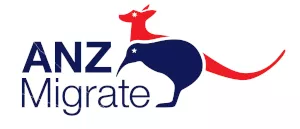- within Immigration topic(s)
From Global Talent to National Innovation: A New Name for Australia's Premier Visa Australia's National Innovation Visa (NIV), effective from December 6, 2024, represents an evolution from its predecessor, the Global Talent Visa, which included the prioritised Global Talent Independent visa. This updated visa retains the same subclass 858 program, and is designed to attract high calibre talent to Australia. Here's everything you need to know about this migration pathway.
Key Updates from the Global Talent Visa
1. Renaming Reflects Broader Ambitions
The Subclass 858 visa has been rebranded as the National Innovation Visa. While the core legislative criteria remain unchanged, the new name emphasizes alignment with Australia's strategic focus on innovation and economic advancement.
2. Mandatory Invitation Requirement
Applicants must now receive an official invitation to apply, a process managed through the Expression of Interest (EOI) system. This replaces the previous optional invitation framework and adds a 60-day window for visa applications following an invitation.
3. Indicators to Support Evaluation Criteria
Unlike the previous system, which lacked specificity, the NIV introduces clear indicators to assess "exceptional and outstanding achievements." These include research grants, keynote presentations, and intellectual property, ensuring greater transparency for applicants and decision-makers.
4. Flexibility for Permanent Residents
Like its predecessor, the NIV imposes no obligations on permanent residents. While the program seeks to attract individuals who will benefit Australia, recipients are under no formal requirement to contribute to the economy or specific sectors.
5. No Sector or Salary Requirements
Eligibility criteria are not tied to specific sectors, though achievements in critical areas influence priority processing. Similarly, while no salary threshold is mandated, high earnings or a job offer in Australia exceeding earnings of AUD $175,000 serve as strong indicators of high-calibre talent.
6. Multiple Achievements Now Required
Applicants must demonstrate a record of multiple internationally recognized achievements. This is a shift from the Global Talent Visa, where a single, extraordinary accomplishment could suffice.
Assessing Exceptional and Outstanding Achievements
To qualify for the National Innovation Visa, applicants must present evidence of multiple exceptional and outstanding achievements through various indicators, including:
1. Prestigious International Awards
Recognition through top-of-field awards such as (but not limited to) the Nobel Prize, Fields Medal, or Olympic Gold Medal.
2. National Research Grants
Evidence of high-profile grants, such as those from (but not limited to) the Australian Research Council or equivalent global organizations like the US National Science Foundation.
3. PhD with Academic Leadership
A PhD combined with substantial academic influence, such as publications in top-ranked journals (Nature, The Lancet), a competitive h-index (eg. 14 or higher for an early career researcher), or a degree from a high ranked university (eg. in the top 100 university ranked by Times Higher Education).
4. Recognition for Keynote Presentations or High Earnings
Delivering keynote addresses at major international conferences; or Meeting or exceeding the Fair Work high-income threshold (AUD $175,000) through current earnings or an Australian job offer.
5. Government Agency Nomination
Nominations by Australian Commonwealth, State, or Territory governments, in addition to the following:
a. Contributions from athletes and creatives who enhance Australia's global reputation.
b. Proof of innovative investments supporting successful ventures.
c. Promising entrepreneurial projects linked to national innovation hubs.
d. Recognized intellectual property, including international patents.
Alternative PhD Graduate Pathway
As under the previous Global Talent visa, PhD graduates may also qualify as meeting the record of exceptional and outstanding achievements requirements based on their academic achievements. Key considerations include the global significance of their research, its relevance to Australia's industries, and its potential to drive innovation and productivity. The application must be made within 3 years of the PhD conferral.
Processing Priorities
The National Innovation Visa introduces a structured five-level priority processing system, ensuring that applicants contributing most significantly to Australia's strategic priorities are fast-tracked. This system applies to both the Expression of Interest (EOI) and visa application stages. Importantly, these priorities do not determine eligibility but rather the speed at which applications are assessed.
1. Priority Level One is reserved for global leaders who have received top-tier international awards such as the Nobel Prize, Fields Medal, or Olympic Gold Medal. These individuals are recognized as the best in their fields worldwide.
2. Priority Level Two includes applicants nominated by Commonwealth, State, or Territory government agencies. This nomination requires the applicants to evidence alignment with the regional or national objectives of the agencies.
3. Priority Level Three focuses on applicants with exceptional and outstanding achievements in Tier 1 sectors. These sectors represent cutting-edge industries that are pivotal to Australia's innovation and economic growth. They include:
a. Critical Technologies encompasses transformative areas such as artificial intelligence, robotics, quantum technology, and cybersecurity, as well as advanced manufacturing and clean energy solutions.
b. Renewables and Low-Emission Technologies addresses Australia's transition to net-zero emissions through innovations like renewable energy generation, carbon storage, green hydrogen, and circular economy initiatives.
c. Health Industries advances medical science through breakthroughs in biotechnology, precision medicine, wearable health devices, infectious disease prevention, and pharmaceuticals manufacturing.
4. Priority Level Four includes applicants with exceptional and outstanding achievements in Tier 2 sectors that are vital for Australia's economic and industrial growth. These sectors encompass:
a. Agri-food and AgTech provides innovation and value-adding in agriculture, forestry, and fisheries, including biotechnology, biosecurity, and sustainable farming practices.
b. Defence Capabilities and Space advances sovereign defence and space capabilities through areas like space systems engineering, electromagnetic technologies, and propulsion systems.
c. Education demonstrates leadership and innovation in academia, including senior management roles or high-level research positions at universities and other higher education institutions.
d. Financial Services and FinTech drives advancements in financial technologies such as blockchain, data analytics, and cybersecurity for financial systems.
e. Infrastructure and Transport innovates within large-scale infrastructure projects and transformative transport technologies, including advanced manufacturing for the sector.
f. Resources enhance value in resource sectors through areas like critical minerals processing, resource waste management, and automation technologies.
5. Priority Level Five applies to all other applicants who meet the eligibility criteria but do not fall within the defined priority categories. This hierarchy ensures that Australia's most impactful applicants receive expedited processing, while still allowing opportunities for a diverse range of candidates. By focusing on applicants who can drive innovation and strengthen national capabilities, the system ensures Australia remains competitive on the global stage.
Existing Global Talent (and Global Talent Independent) Visa Applications
The government has committed to continue the processing of existing applications under the Global Talent (and Global Talent Independent) visa however the processing priority of these applications are subject to the new processing priorities. Global Talent Independent applications are likely to be considered at processing priorities 3 and 4, with the exception of the Tourism sector which is priority 5, and at the same processing priority of the Global Talent visa (ie. without the previous Global Talent Independent prioritisation).
Current published processing times for the Global Talent visa (likely equivalent to Priority level 5) are 50% processed within 29 months, and 90% processed within 34 months. Published processing times for the Global Talent Independent visa (likely equivalent to Priority level 3 and 4, with the exception of the Tourism sector) are 50% within 8 months, and 90% within 10 months.
It should be noted that historically, the Global Talent visa was known as the Distinguished Talent visa and still retains this name in many government documents. The Global Talent Independent visa is generally referred to as the Global Talent visa.
The content of this article is intended to provide a general guide to the subject matter. Specialist advice should be sought about your specific circumstances.


